The cactus is a plant that may be common in any household or found in the middle of the desert. However, survival in the desert is not for the weak at heart, and, amazingly, the cactus plant can survive years in the desert. To this end, the cactus survives by storing water in the arid desert environment and fending off predators through adaptations.

Why does a cactus have thorns?
Cactus is different than a typical tree or plant in that it doesn’t have leaves or branches. Instead, the cactus has modified branches called areoles. These are called spines and are different due to the production of thorns. The cactus has spines because it typically grows in an area of abundant sunlight, so it is not necessary to have large leaves to catch sunlight for photosynthesis. Four main reasons cactus have thorns are to trap air, collect water, provide shade, and keep predators at a distance.

Image Credit: pexels.com
Trap Air – The cactus spine design helps reduce airflow, which reduces the overall evaporation. Water reduction is a significant concern for a desert plant and having a spine that reduces evaporation while creating a zone with slightly elevated humidity is essential for survival.
Collect Water – Deserts will usually have morning fogs. These fog clouds carry essential water for the plant. The spine is designed to collect water droplets from the mist in the morning, allowing the cactus to absorb moisture before the heat of the day.
To this end, the spines will occasionally drop dew into the soil around a cactus plant, allowing for the root system to stay hydrated. As a result, the cactus spines collect water uniquely compared to other plants and have been studied for ways to collect rainwater in arid climates better.
Provide Shade – surprisingly, the spines provide a decent amount of shade to the overall cactus plant. The shade is essential during the scorching heat of the day, and every little bit helps keep the plant alive. The cactus plant may carry hundreds and even into the thousands of spines, and each of these has grooves to capture water and shade.
Predators – the limited water in the desert creates a perfect storm for predators looking for necessary water. The cactus plant holds a significant amount of water within the plant, so naturally, herbivore animals will look to the cactus for nourishment. The spines do protect some animals; however, the desert tortoise, rats, and bighorn sheep are not deterred by the cactus spike.

Image Credit: quora.com
Why does a cactus have thick skin?
The thick skin of cacti is essential for two reasons, to hold water and to make it difficult for predators. Mucilage is contained in the stems of cacti to help absorb moisture. Mucilage will store the water for a long time within the plant, and due to this, the stems grow and become thick—the healthier the plant, the thicker the skin. Predators will look to the healthiest plants for nourishment due to the amount of water stored in the skin. In addition, the thorns are one deterrent, and the thick skin makes it difficult for predators to bite into the plant.
How does a cactus survive in the desert?
The cactus survives using its spines to bring in water and the storage of water in the plant's stem. Water is a rare commodity within the desert, and the cactus has adapted to take in as much as possible when it is available. The cactus also fends off non suspecting predators through its spines and thorns. The longer a cactus fends off the predators, the more water it may intake to grow stronger root systems to survive longer in the desert climate.
What adaptations does a cactus have?
Cacti are defined as xerophytes or plants that grow in dry habits. To grow in a dry habit requires adaptation to the environment and predators.
Environment – the cacti have developed a variety of ways to survive in the harsh desert environment.
The spine of the cacti is one such adaptation that allows the plant to stay hydrated and shaded. The other is the development of mucilage to retain water within the stem of the plant.
Predators – the spine development has helped keep predators away due to the spikes that cacti will produce. The other is the use of mucilage to develop a tough and thick skin to the stem of the plant. This helps deter punctures animal teeth may put into the plant that would otherwise dry out the plant and kill the cacti in the most extreme circumstances.
9 Rarest Cactus that hard to find
Rubi Ball (Gymnocalycium Mihanovichii) – very bright cacti with red, purple, white, yellow, and orange colors. The stem is spherical and is divided into different segments. The Rubi ball produces pink flowers and gray-green fruits.
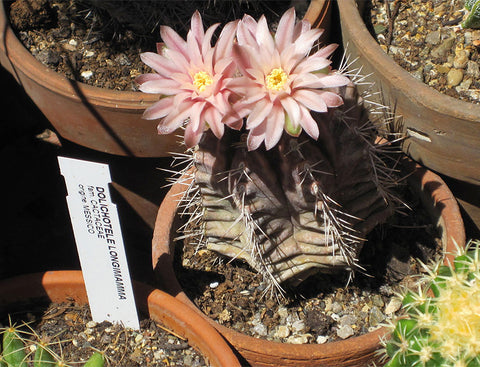
Image Credit: en.wikipedia.org
Stenocerius Hollianus Cristata – extremely spiky cacti that are suited for any climate, either indoor or outdoor. The plant requires minimal water but needs significant air circulation.
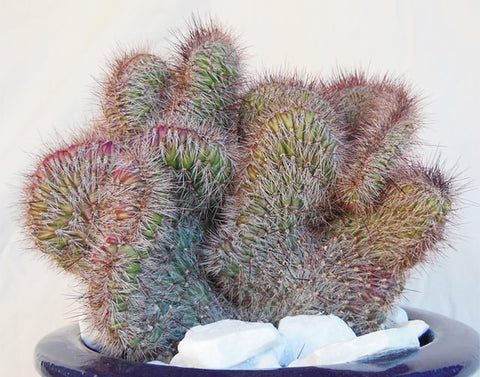
Image Credit: plantedshack.com
Dinosaur Back Plant – a larger cactus plant that may grow as large as 5 meters. Temperamental to the climate, this plant will not survive in any temperature that hits below 25 Fahrenheit.

Image Credit: llifle.com
Rainbow Hedgehog Cactus – a globe-shaped smaller cactus that is pink. Full sunlight is needed constantly for the survival of this plant and will scar or die if exposed to any frost climate. The hedgehog requires minimal water and produces beautiful pink blooms.
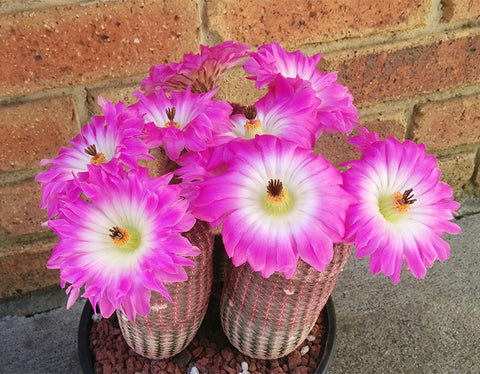
Image Credit: en.wikipedia.org
Emerald Idol – part of the prickly pear family that grows edible fruit. The plant grows curvy with white ribs and small spines. Grows strongly in indirect sunlight.

Image Credit: pinterest.com
Totem Pole – different than other cacti due to the spineless nature and smooth surface. The plant will grow tall but over a long period. The totem pole cactus requires direct full sunlight and a warm temperature to survive.

Image Credit: davesgarden.com
Haku-Jo – a fast-growing cactus plant that is globe-shaped. It is extremely difficult to grow to the flowering phase of the plant, but it produces beautiful white flowers. Minimal watering with no watering during winter is essential for this plant to survive.
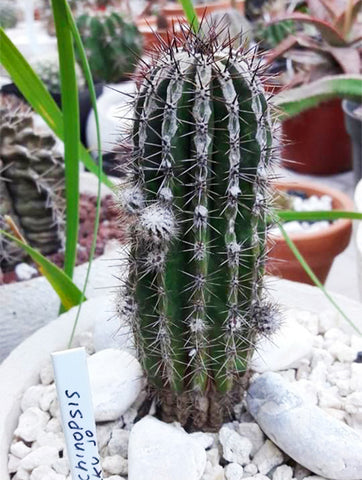
Image Credit: pinterest.dk
Orange Cob – this cactus produces large flowers that range in color from red, orange, and pink. The cactus has a dense spine network and easily rots.
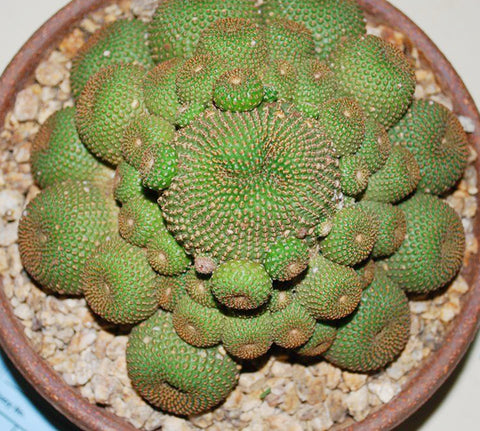
Image Credit: davesgarden.com
Eve’s Needle – requires a significant amount of sunlight and heat to grow. The plant will grow fairly tall but requires a significant amount of time to bloom.
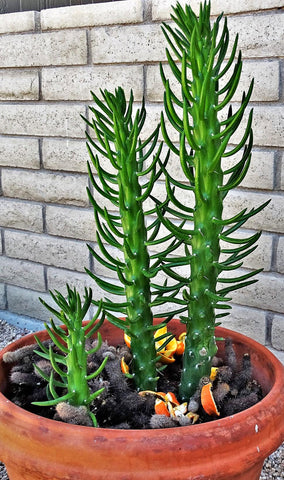
Image Credit: garden.org
Learning more about Echeveria, which is a variety that possesses a lovely shape.

























